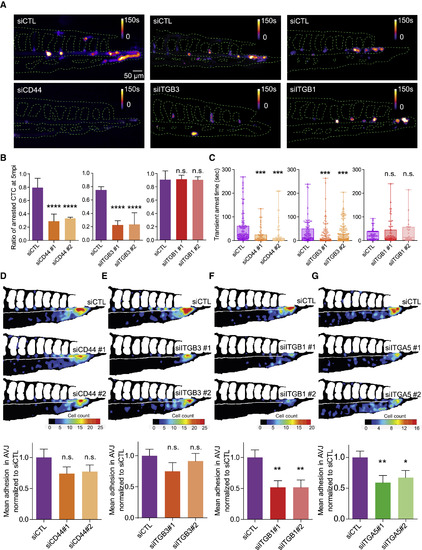Fig. 3
- ID
- ZDB-FIG-200107-5
- Publication
- Osmani et al., 2019 - Metastatic Tumor Cells Exploit Their Adhesion Repertoire to Counteract Shear Forces during Intravascular Arrest
- Other Figures
- All Figure Page
- Back to All Figure Page
|
CD44 and ITGB3 Are Involved in CTC Arrest, and ITGB1 Is Required for Stable Adhesion In Vivo D2A1 cells were transfected with the indicated siRNAs and microinjected into the duct of Cuvier of 2 dpf Tg(Fli1:EGFP) embryos. (A–C) Cell arrests were live-imaged for 5 min immediately after injection. (A) Time projection of a representative embryo. The color code shows the arrest time of CTCs. See also Videos S7, S8, and S9. (B) The ratio of cells stably arrested after 5 min over the total number of cells was measured. The graphs show the mean ± SD of 3 independent experiments. (C) The transient arrest time of cells was measured. The graphs show the mean and minimum/maximum of 3 independent experiments. (D–G) The cell adhesion pattern was imaged 3 h after injection for cells depleted for CD44 (D), ITGB3 (E), ITGB1 (F) or ITGA5 (G). The heatmaps show quantification of the number and location of stably arrested CTCs at 3 hpi in the caudal plexus. The number of cells stably adhered in the AVJ was measured. The graphs show the mean ± SEM of 5 independent experiments. |

